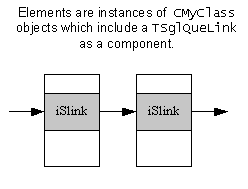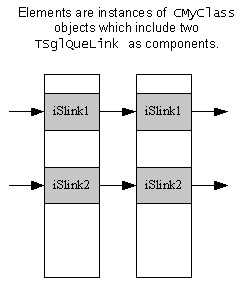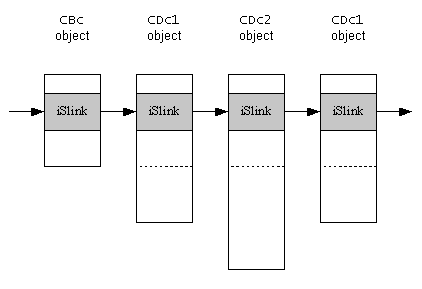How to form links
To be an element of a list, each element needs to contain a link object.
To form a singly linked list of CMyClass objects, include
the link object TSglQueLink as a component of CMyClass:
class CMyClass : public CBase
{
...
TSglQueLink iSlink;
...
};

Figure: Two elements in a linked list
Although any kind of object can be an element of a linked list, most lists consist of elements which are all of the same type.
An object can participate in more than one list. For example, to allow CMyClass objects
to participate in two singly linked lists, include two separate TSglQueLink objects
as components of CMyClass:
class CMyClass : public CBase
{
...
TSglQueLink iSlink1;
...
TSglQueLink iSlink2;
};

Figure: An example of two elements, in two lists where they are consecutive elements in both lists
Elements can also be objects constructed from a variety of classes, all
ultimately derived from the same base class, where that base class includes
the link object as a component. For example, if CBc is a
base class for CDc1 which, in turn, is a base class for CDc2,
then the elements of the list can consist of a mix of CBc or CDc1 or CDc2 objects.
class CBc : public CBase
{
...
TSglQueLink iSlink;
...
};
class CDc1 : public CBclass
{
...
}
class CDc2 : public CDc1
{
...
}

Figure: Example of a linked list of different element types
Note that the link object is at the same offset in each element in this list.
New link elements can be inserted at the beginning or the end of the list,
but not into the middle of the list. The functionality for this is provided
by the header TSglQue<class T>.